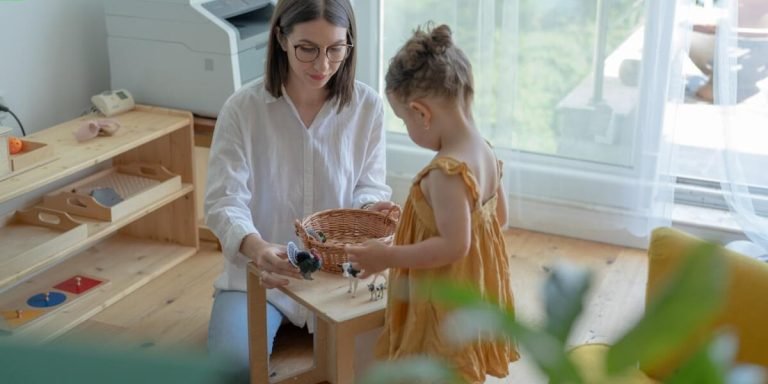Sped Teacher: A Guide to Understanding Their Role in Childhood Education
“Sped teacher”, short for special education teacher, plays an integral role in childhood education. Ensuring equal opportunities to learn for all children – including those with physical and cognitive challenges – effectively requires the dedication of these specialized teachers who are equipped with unique strategies, patience and a deep respect towards diversity.
Understanding the duties of a sped teacher involves recognizing their substantial importance within our educational system. These educators provide not just curriculum understanding but also offer various Special Education Resources & Support that helps learners accomplish success at their respective paces. In this article, we delve into the multifaceted responsibilities that define them and how they contribute immensely to shaping an inclusive learning environment.
Did you know?
Did you know that Special Education (SpEd) teachers often work with fewer students compared to general education classrooms? This allows them to provide personalized attention and adopt specialized teaching methods tailored for each child’s needs.
Understanding the Role of a SPED Teacher
The evolving landscape of education, amplified by ongoing technological advancements and the unprecedented challenges that came along with 2023, has paved the way for a more prominent role for SPED (Special Education) teachers. Now more than ever, these specialized educators are instrumental in shaping inclusive learning environments where students of all ability levels can thrive.
A pivotal aspect to understanding their significant contribution lies in recognizing how they harness technology as an ally while educating young minds. Technology integration within special education is no longer considered optional; instead,is seen as a necessary tool that enhances accessibility and improves individualized instruction methods.
SPED teachers make use of assistive devices or educational software to address specific needs among children with unique learning styles or disabilities. They implement adaptive technologies – from text-to-speech software enhancing reading comprehension to touch-screen monitors aiding motor skill development- creating customized lessons catered towards each student’s capabilities.
Simultaneously, these skilled professionals offer much-needed support resources beyond academic assistance – be it emotional counseling services or family engagement initiatives- cementing their status as essential pillars within our educational system. As we continue navigating through 2023 amidst rapid digitalization waves and shifts in pedagogical strategies, appreciating the multi-dimensional roles played by SPED teachers becomes paramount.
Qualifications and Training Requirements for Special Education Teachers
Before embarking on the noble journey to becoming a Special Education Teacher (SPED), one must be aware of its qualifications and training requirements. These are crucial elements that equip a sped teacher with necessary skills to meet distinct learning needs.
First, obtaining at least a Bachelor’s degree in Special Education is basic requirement. Universities offer these programs which include subjects like child psychology, behavioral intervention strategies and adapted instructional methods specifically designed for children with disabilities or special needs.
Second, in addition to the bachelor’s degree it’s important you possess an official certification or licensure recognized by your state board of education confirming that you met all educational prerequisites . This ensures adherence to high professional standards while lending credibility as well.
Thirdly , continuing education units (CEUs) should not be ignored either. Owing their essence due to rapid technological advancements revolutionizing teaching methods year after year . Not only does this keep SPED teachers abreast with latest technologies integrating into education effectively but also aids them sustaining licenses over time .
Moving beyond academia – practical experience makes significant difference too! Internships during undergraduate studies help budding educators apply theory into practice under supervision until they’re ready fly solo confidently .
Personalizing Learning: Strategies Used by SPED Teachers in Differentiating Instruction
The role of a SPED (Special Education) teacher is dynamic and crucial in the educational journey of students with diverse needs. As technology continues to revolutionize the education scene, these teachers have found innovative ways to nurture individual learning experiences.
One prominent strategy used by SPED teachers in differentiating instruction revolves around personalized learning – an approach that tailors teaching methods and instructional materials on a student-by-student basis. This setup fosters an inclusive environment where learners get equal opportunities for success.
To execute this effectively, SPED Teachers employ various types of adaptive software and apps targeting specific learning disabilities such as dyslexia or ADHD. These tools are designed to make complex concepts more accessible via interactive visuals or guided step-by-step solutions, thus promoting better comprehension while limitlessly engaging students’ imagination.
Another strategic endeavor involves leveraging assistive technologies like speech-to-text applications allowing those with writing difficulties express thoughts without limitations thereby bolstering their confidence. Similarly, there are voice output communication aids (VOCA) aimed at supporting non-verbal individuals communicate interactively within classes hence facilitating effective participation.
Additionally, they implement chunking – breaking down information into smaller manageable units so learners can pause after each section before moving onto another concept making sure proper understanding has been attained first which also reduces cognitive load tremendously helping them focus better so anyone including ones having attention deficits issues can stay engaged longer periods easily grasp new knowledge imparted.
Essential Resources for SPED Teachers to Enhance Student Learning
The advancement of technology has made a significant impact on the field of special education (SPED). Today, there are numerous essential resources available for SPED teachers aimed at enhancing student learning. These tools play an integral role in successfully integrating technology into their teaching methods and curriculum.
Technology-based resources have proven to be highly beneficial, especially when it comes to dealing with unique challenges posed by special education students. They can not only foster engagement but also empower students who face difficulties in traditional classroom environments.
These digital platforms help make lessons more accessible – from reinforcing basic skills through gamified applications to more sophisticated software that assist children with severe disabilities. By effectively utilizing these technological offerings, SPED teachers can ensure enriching educational experiences tailored according to student needs.
The Importance of Assistive Technology in Special Education
The role of a SPED teacher is multi-dimensional; from planning instruction, assessing needs to supporting the overall development. A key driving factor in current times that augments their efforts is assistive technology.
As a SPED teacher in 2023, it’s crucial to leverage this tool for creating an inclusive learning environment and enhancing student performance. Assistive technology refers to any device or software designed specifically to improve the functional capabilities of individuals with disabilities.
When wielded correctly, these resources can have transformative effects on children who require special education services. They not only open avenues for active participation but also empower students by overcoming barriers posed by physical constraints or cognitive hurdles.
One standout example is text-to-speech software which benefits children struggling with reading difficulties due its built-in functionality of converting written text into spoken words- helping them keep up with coursework while honing literacy skills through auditorily reinforcing word recognition and comprehension techniques.
On similar lines are speech-recognition programs enabling kids grappling writing challenges – they simply dictate thoughts verbally which gets typed automatically!
Utilizing Behavioral Intervention Plans in Classroom Management
The complexities of teaching students with special needs can be overwhelming to even the most experienced sped teacher. In such circumstances, Behavioral Intervention Plans (BIPs) become a critical resource in managing classroom behaviors and enhancing learning for all.
To begin with, BIPs are strategic tools designed according to individual student’s behavioral patterns determined through Functional Behavior Assessments (FBAs). They outline strategies that teachers could use for positive reinforcement while limiting negative ones. For a sped teacher considering the implementation of BIPs in their day-to-day schedules, it is important to remember two key factors: understanding the student’s behavior and adapting interventions accordingly.
No two children behave similarly making it vital for educators to constantly observe trends in students’ actions when creating an effective plan. The right attention paid can help pinpoint triggers or events leading up to undesirable conduct enabling you address them specifically on your BIP.
Adapting these plans may involve using technology as part of intervention strategies where traditional methods fail. This might look like incorporating educational software tailored towards special education into daily lessons stimulating engagement among learners who otherwise found conventional teaching process challenging.
Integration of Augmented Reality(AR) and Virtual Reality(VR) technologies have been breakthrough developments too making interactive content more accessible than ever before boosting the overall experience drastically further motivating participation levels quite significantly.
Building a Supportive Network for SPED Educators and Students
In the technologically advanced world of 2023, SPED (Special Education) teachers often find themselves obligated to keep up with innovative education techniques and tools. This ongoing mission is not merely about staying updated but more significantly for building a supportive network that enhances quality education for students under their care. As educators catering to special needs children, they need an extensive support system – one infused with modern technology solutions.
Such networks are crucial as Special Education isn’t expressed in isolation; it’s indeed centered around adaptability and collective effort. Hence, integrating technology into schooling methods creates a flexible learning environment tailor-made for each student’s unique requirements. Technology moves beyond traditional classroom borders by enabling remote lessons or providing interactive educational apps enhancing engagement levels.
Furthermore, these networks assist SPED teachers too! From accessing curated resources on special education practices housed online databases to forming professional connections via social networking platforms dedicated entirely towards educators’ community – tech power has revolutionized how these professionals grow together as they inspire young minds shaping our future.
Collaborating with Parents and Professionals: A Team Approach to Special Education
Teaming up with parents and professionals within the realm of special education, or SPED teaching, calls for a multidimensional approach. This strategy enables all parties to effectively collaborate in ensuring the best possible outcomes for children who have unique learning requirements.
Parents are an undeniable cornerstone in this supportive network as they often harbor deep insights into their child’s abilities that can mold strategies employed by educators. An open dialogue between SPED teachers and parents nurtures trust and understanding that is conducive to optimizing classroom experiences for students.
The digital era has introduced countless tools geared explicitly toward simplifying communication amongst networks supporting individuals involved in Special Education Resources & Support (SERS). The use of video conferencing platforms allows teachers meeting virtually with parents at any convenient time which stimulates consistent interaction facilitating comprehensive overview on student progress even during times when physical meetings might be challenging.
Accessing Community Services and Advocacy Groups for Additional Assistance
In the pursuit of creating a supportive network for SPED educators and students, accessing community services as well as advocacy groups can offer significant assistance. These resources not only provide additional tools to enhance a SPED educator’s arsenal but also ensure that students have access to comprehensive education.
Communities around us are abundant with organizations devoted to supporting special education needs. As a sped teacher, it is crucial your resource toolbox includes these avenues too. Many non-profit organizations offer specialized training programs designed keeping in mind the unique challenges faced by the special ed community.
They introduce current methodologies and help you refine teaching techniques through hands-on workshops.
Participation in such initiatives will equip you better when dealing with complex situations within classrooms or while devising personalized learning strategies essential for each student’s academic growth path.
Moreso now than ever before, thanks technology integration waves sweeping across 2023 landscape! Tech has shown its potential becoming helpful ally augmenting traditional methods easier navigation across challenging terrain present day classroom dynamics.
For instance; adaptive software applications enable every child learn own pace thus ensuring no one gets left behind race progress despite differing levels understanding capability.
Conclusion
In essence, a sped teacher is more than just an educator. They are advocates for special needs children in the vast realm of education, equipping them with both academic and life skills that will aid these young learners long after they’ve left the classroom walls.
Whether you’re an interested parent or working professional considering becoming part of this important field, understanding their role is essential. We invite you to explore our website further where we offer ample resources on educating children along with profound guidance for parents and educators alike. Stay informed and help us shape future generations one child at a time.







